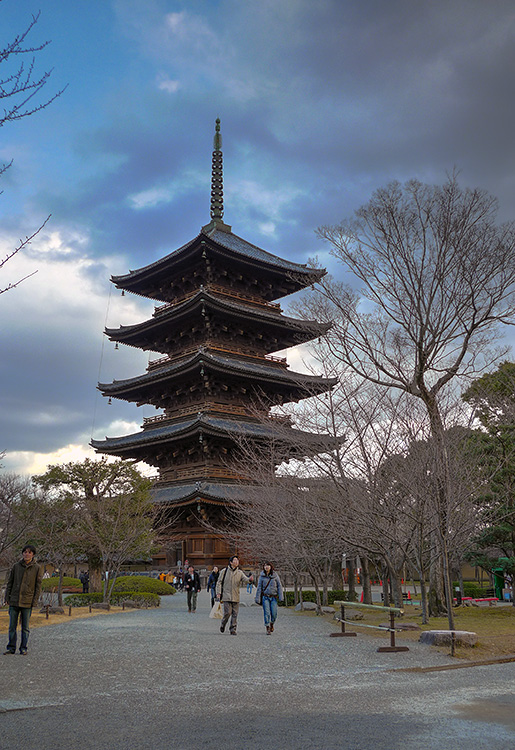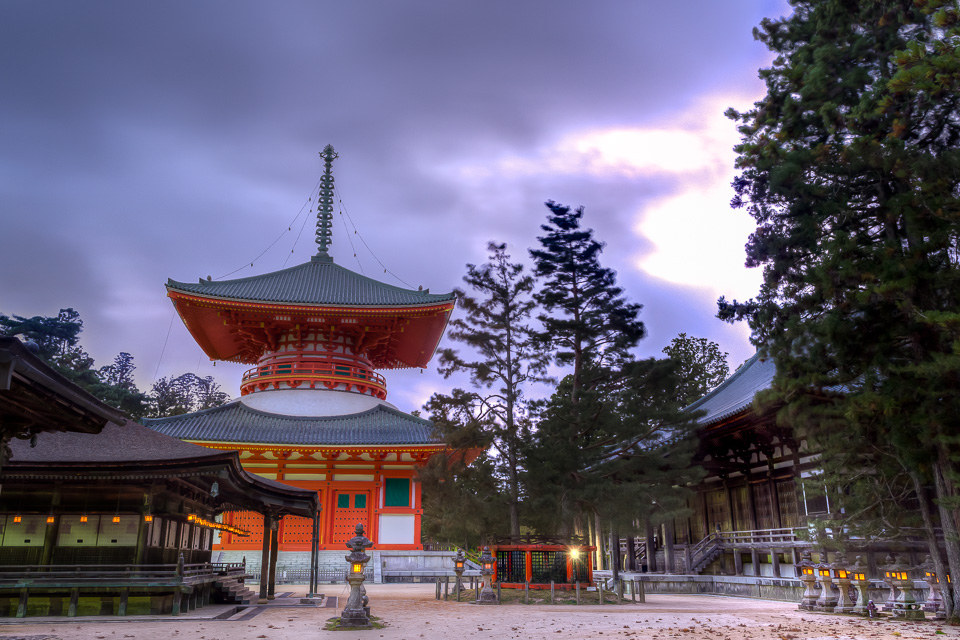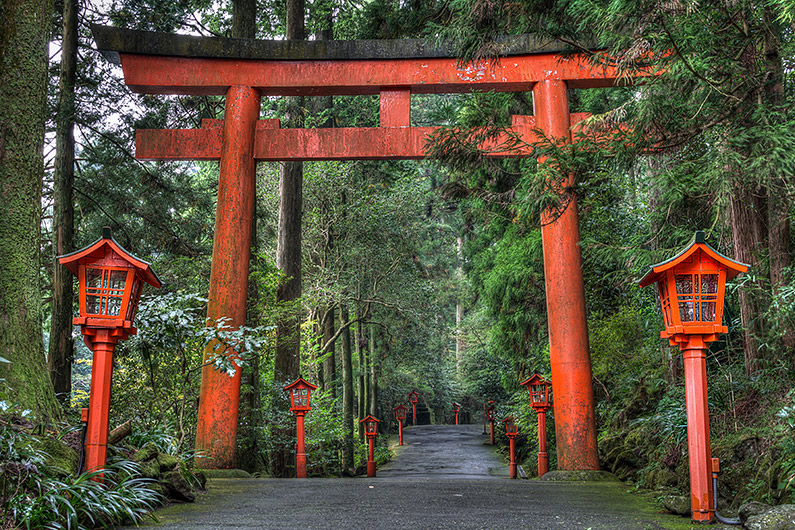Ginkaku-ji 「Silver Pavilion Temple, 銀閣寺」 – officially called Jishō-ji 「Temple of Shining Mercy, 慈照寺」 – is 1 of 17 UNESCO World Heritage sites in Kyoto and isn’t actually silver.

In this article:
Quick facts:
- Construction completed around 1482, built as a villa for the Shogun.
- Converted into a Buddhist temple and named Jisho-ji when the Shogun died in 1490.
- Originally the exterior of the Kannon Hall, the storied icon of the temple, was finished in a black lacquer.
- There are two tales of why the temple is commonly called The Silver Pavilion:
- The Shogun who ordered construction of the buildings originally planned to cover the Kannon Hall in silver leaf, similar in style to his grandfather’s Golden Pavilion Temple. However, Ginkaku-ji was never painted silver.
- Lights reflecting off the pond surrounding the Kannon Hall shone like silver on black lacquered exterior walls.
- UNESCO World Heritage status given in 1994 as part of the Historic Monuments of Ancient Kyoto.
- Open 365 days a year.
- Easily accessed by Kyoto city bus, 5 minutes walk from the bus stop.
Explore Ginkaku-ji
Ginkaku-ji features a handful of buildings. Although comparatively small in size to other famous locations in Kyoto, this temple has a rich history.
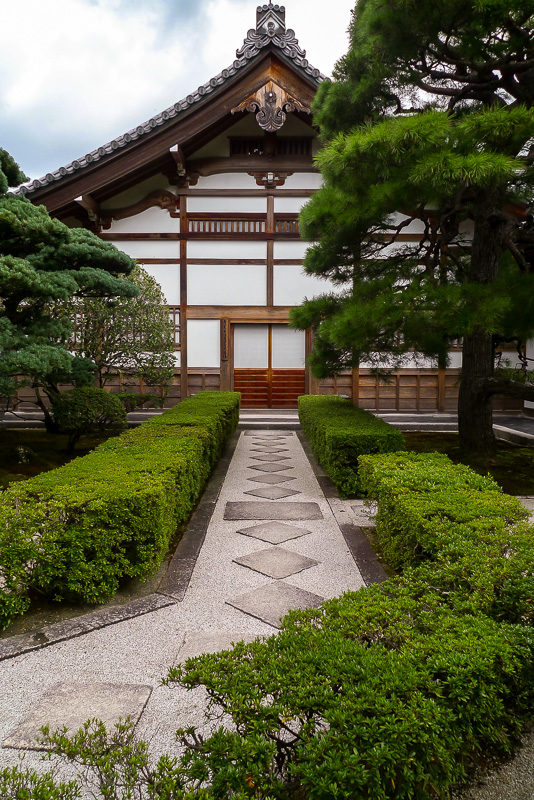
Kuri (Warehouse, 庫裹)
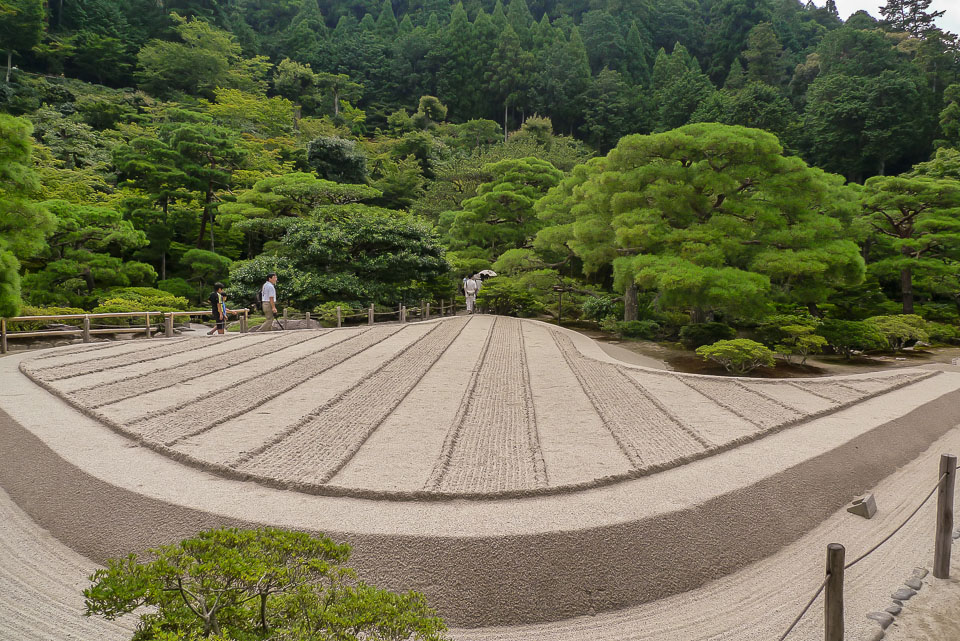
Ginshadan (Sea of Silver Sand, 銀沙灘)
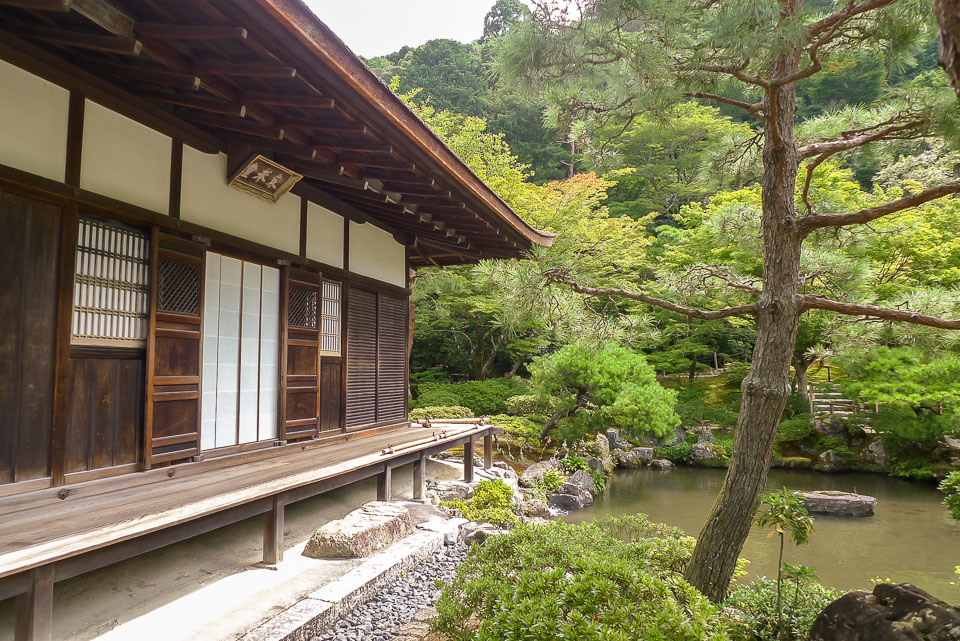
Tōgu-dō (東求堂), built in 1485.
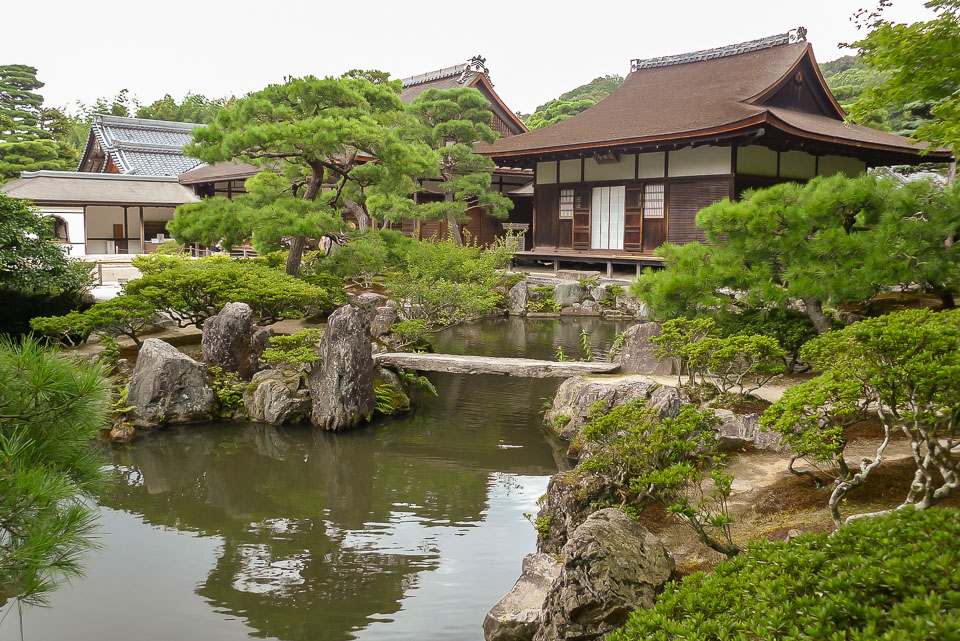
Senkei-bashi (Senkei Bridge, 仙桂橋) over the Kinkyochi (Brocade Mirror Pond, 錦鏡池) leading to the tiny Hakkaku-jima (Hakkaku Island, 白鶴島)
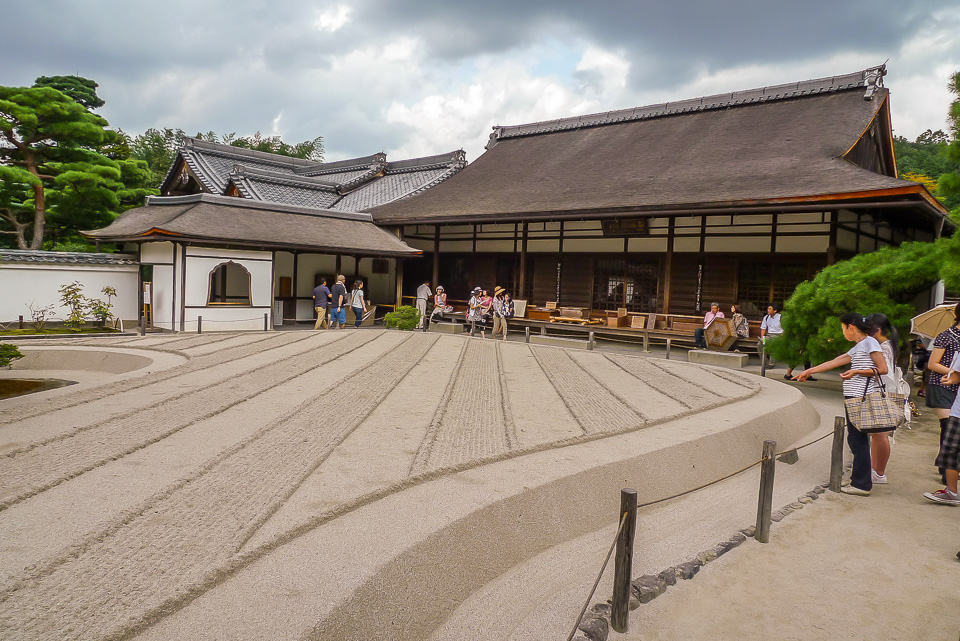
Main Hall: Hojo (方丈) or Hon-den (本堂)
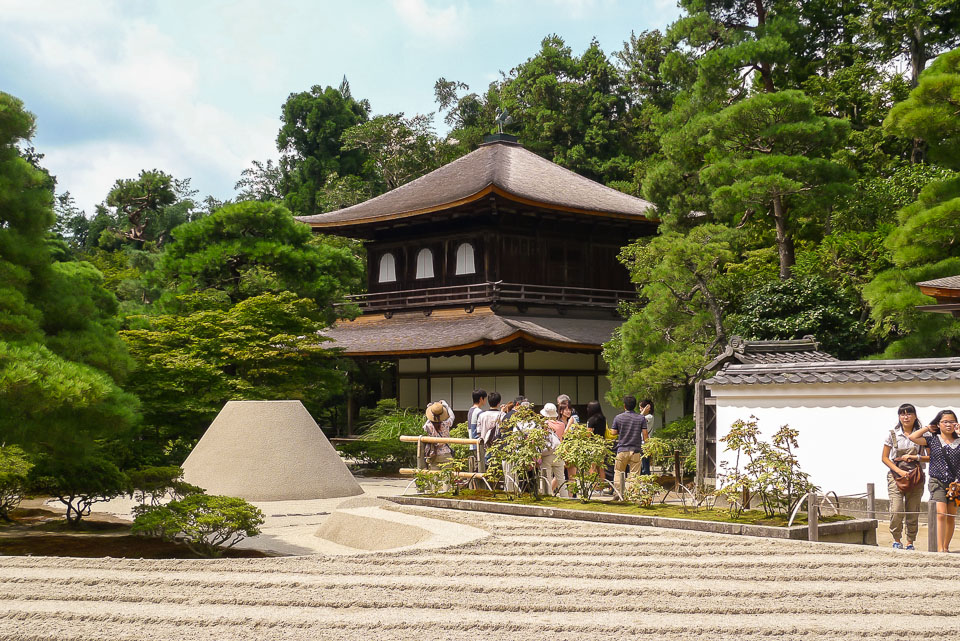
Ginshadan (Sea of Silver Sand, 銀沙灘), and Kōgetsudai (Moon-Viewing Platform, 向月台), said to represent Mount Fuji
The Silver Pavilion

Ginkaku (Silver Pavilion, 銀閣) built in 1489.
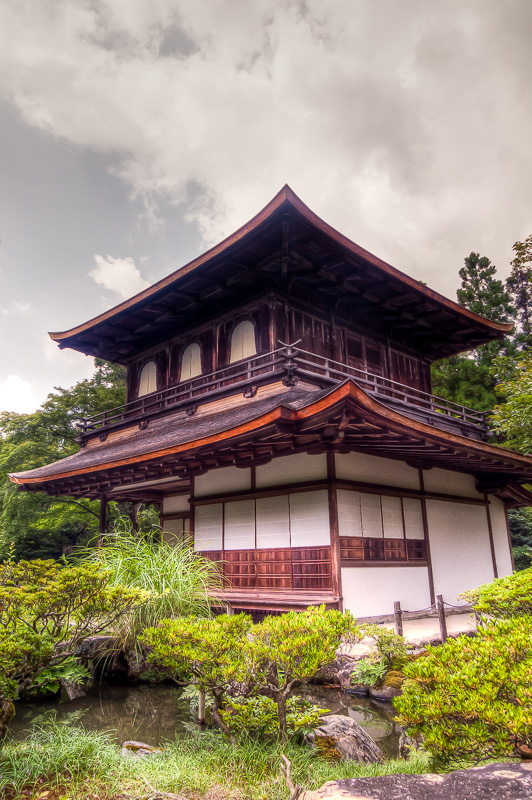
Official name: Kannon-den (観音殿), commonly called Ginkaku (Silver Pavilion, 銀閣)
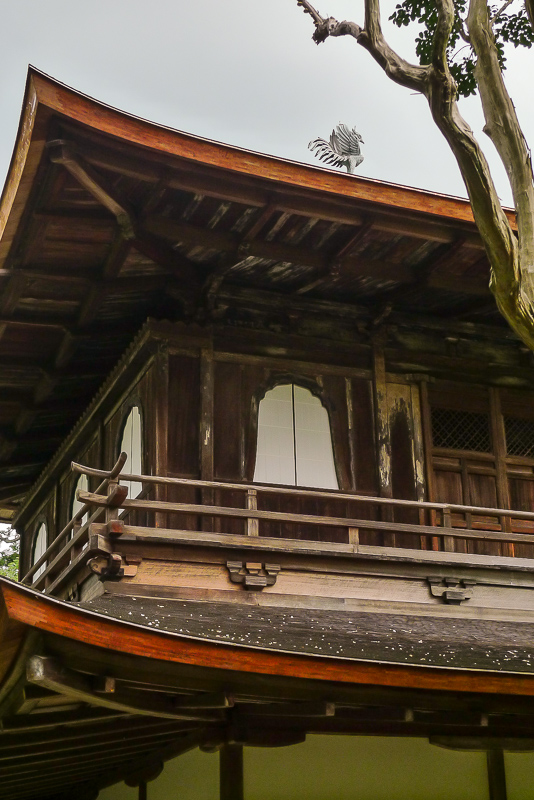
Silver phoenix on the roof of the pavilion.
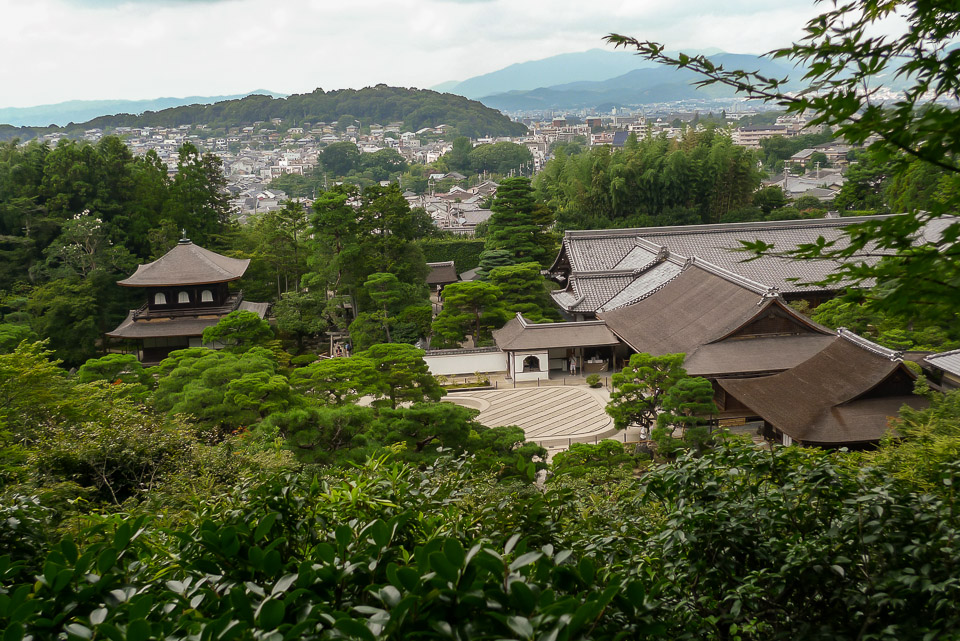
View of the Ginkaku-ji complex from one of the garden paths a little up the mountain.
Map of Ginkaku-ji
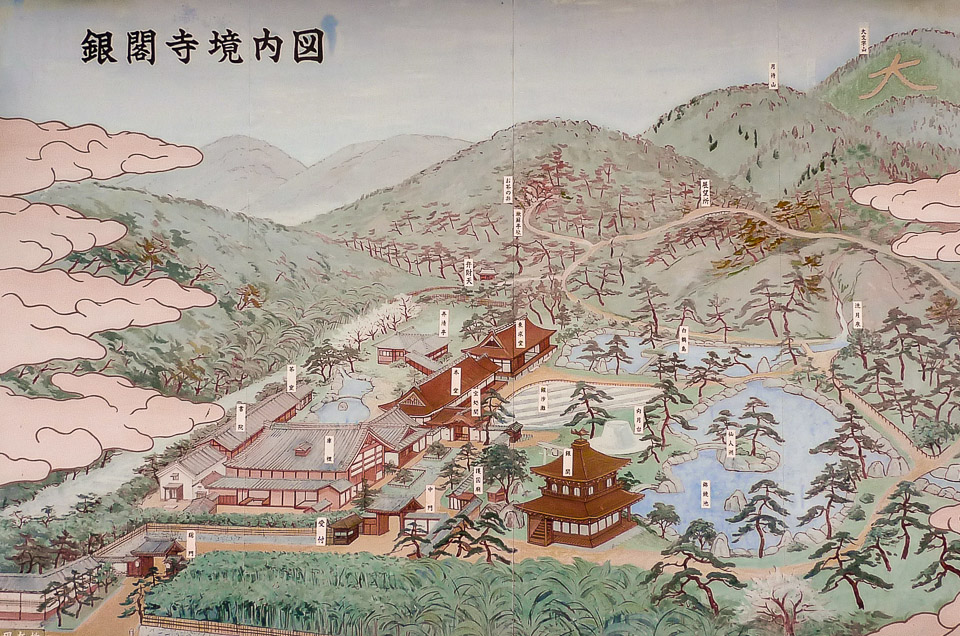
How to get to Ginkaku-ji
If not traveling by a hire bike in Kyoto, Ginkaku-ji is easily accessed by bus.
- From Kyoto Station: take Kyoto City Bus number 5 or 17.
- From Kinkaku-ji (Golden Pavilion Temple): take Kyoto city bus 102 or 204.
Opening hours and admission cost
The temple is open:
- 8:30AM – 5PM, 1 March – 30 November
- 9AM – 4:30PM, 1 December – end of February
Entry to the temple costs:
- Adults/high school students: ¥500
- Childeren and juniour high school students: ¥300
Traveler’s tips
- Ginkaku-ji is quite small, so you don’t need long to see the entire complex. Unless you plan to sit and contemplate the while looking at the zen rock gardens, you’ll spend no more than 1 hour here.
- Hire a bicycle in Kyoto and ride to Ginkaku-ji. Most of the city is very flat and makes for a more interesting journey.
Other things to do near Ginkaku-ji
Ginkaku-ji is on the same bus routes as several other interesting landmarks:
- Bus route 100: Sanjusangen-do Hall, Gion, Yasaku-jinja Shrine and Kiyomizu-dera Temple
- Bus route 203: Kinkaku-ji Temple
- Bus route 204: Shimogamo Shrine, Nijo Castle and Kyoto Imperial Palace (also bus 102 and 203 for the Palace


